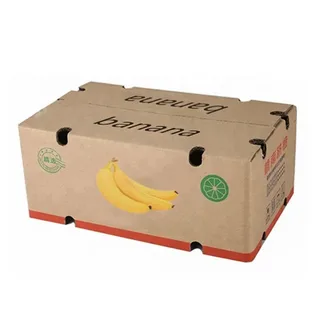Banana boxes, often recognized for their iconic design and functionality, play a crucial role in the distribution and storage of bananas. However, their utility goes far beyond just bananas. In this exploration, we’ll delve into the origins, construction, uses, and the broader implications of banana packaging in various industries.
Origins and Design
Banana boxes have their roots in the need for efficient transport of bananas from tropical plantations to markets worldwide. Traditionally, bananas are harvested green and require special handling to avoid bruising and spoilage during transport. The design of banana packaging, typically made from sturdy cardboard, features ventilation holes that allow air circulation, reducing the risk of decay.
The standard banana box measures approximately 24 inches by 12 inches by 12 inches, which is an ideal size for stacking and handling. Each box can hold about 40 to 50 pounds of bananas, making it a practical option for growers and distributors.
Construction and Materials
Banana boxes are typically made from corrugated cardboard, a material chosen for its durability and lightweight properties. The corrugation provides strength, allowing the boxes to withstand the rigors of shipping without collapsing. Additionally, the use of recycled materials in the production of banana packaging aligns with sustainable practices, making them an environmentally friendly option.
The boxes are often printed with bright colors and logos, which serve both branding and informational purposes. The labels usually include handling instructions and information on the ripeness of the fruit, aiding retailers in managing their stock.
Uses Beyond Bananas
While banana boxes were initially designed specifically for bananas, their robust construction and practicality have led to their adoption in various other fields:
- Fruit and Vegetable Shipping: The ventilation features of banana packaging make them suitable for transporting other perishable goods. Many growers utilize banana boxes to ship apples, tomatoes, and other fruits and vegetables, ensuring they reach markets fresh and undamaged.
- Storage Solutions: Due to their sturdy nature, banana boxes are often repurposed for storage in homes and businesses. They can be used to organize items in garages, basements, or even classrooms. The easy-to-stack design saves space while providing a practical solution for clutter.
- Moving and Packing: Many individuals and businesses use banana boxes for moving. Their size is convenient for packing a variety of household items, from books to kitchen utensils. Their lightweight nature makes them easy to transport, which is crucial during the moving process.
- Creative Projects: Artists and DIY enthusiasts have found innovative ways to repurpose banana boxes. They can be transformed into unique furniture pieces, decorative displays, or even art installations. Their availability and low cost make them an appealing option for creative projects.
- Education: In educational settings, banana boxes are often used for hands-on activities. Teachers can utilize them for sorting exercises, math games, or as props in dramatic play scenarios, demonstrating their versatility beyond mere transport.
Environmental Impact
The production and use of banana boxes also present an interesting case study in sustainability. With an increasing focus on eco-friendly practices, many companies are now utilizing recycled materials in the manufacturing of these boxes. This reduces waste and lessens the carbon footprint associated with new materials.
Moreover, because banana boxes are designed for reuse and recycling, they contribute to a circular economy. Once their initial use is over, these boxes can often be recycled or repurposed, further extending their lifecycle and minimizing landfill contributions.
Economic Significance
Banana boxes hold significant economic value within the agricultural and shipping industries. The ability to transport bananas efficiently impacts the pricing and availability of this popular fruit worldwide. Countries that are major banana exporters, such as Ecuador, the Philippines, and Costa Rica, rely heavily on the functionality of banana boxes to ensure that their products reach global markets swiftly and in optimal condition.
The costs associated with packaging are a crucial factor in the overall pricing strategy for bananas. Efficient use of banana boxes helps reduce waste and ensures that businesses can operate more sustainably, which is increasingly important in today’s market.
The Future of Banana Boxes
As technology and sustainability practices continue to evolve, the future of banana boxes appears promising. Innovations in biodegradable materials may soon lead to the development of even more environmentally friendly packaging solutions. Companies are exploring options such as plant-based plastics or compostable materials that retain the functionality of traditional banana boxes while reducing environmental impact.
Moreover, the rise of e-commerce has led to an increased demand for versatile and reliable packaging solutions like barbie doll package. As online grocery shopping grows, banana boxes may see expanded use in home deliveries, not only for bananas but for other fruits and perishables as well.
Conclusion
Banana boxes are far more than simple containers for transporting bananas. They embody a blend of practicality, sustainability, and versatility that extends across various industries. From shipping fresh produce to serving as effective storage solutions and creative materials, their influence is widespread.
As we continue to prioritize sustainability and efficiency in our consumption and production methods, the humble banana box remains a shining example of how thoughtful design can make a significant impact. Whether you’re a grower, a consumer, or a creative spirit, the banana box has something to offer, proving that even the simplest objects can have a profound and lasting influence on our lives and the environment.
Read the latest blogs here


